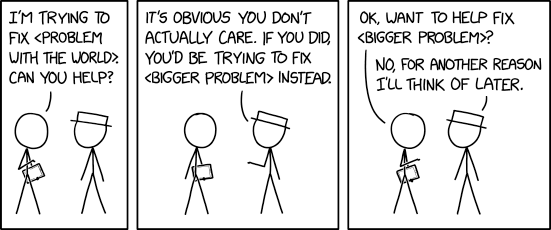
A blog about how-to, internet, social-networks, windows, linux, blogging, tips and tricks.
05 October 2020
Ocean Solutions Accelerator’s third wave tackles a new set of aquatic challenges
The Sustainable Ocean Alliance and its Ocean Solutions Accelerator take on the problems facing our planet’s waters, and the latest cohort of companies in the latter show a fresh slate of issues to address and resources to utilize. From reef rehabilitation to a “Fitbit for fishing boats,” they’re trying to fix things up in the oceans or at least mitigate the damage we’re doing down there.
The accelerator’s four week, all-virtual (like all of them these days) program focuses on the unique challenges faced by social good companies in this space.
“Startups in the sector are still struggling to find adequate funding during the early phases of operations,” the accelerator’s co-founder Craig Dudenhoffer told TechCrunch in an email. “Many of the solutions (especially hardware) are costly to produce and take a heavy upfront cash investment. We found that out of the hundreds of applicants, only a fraction had received substantial investments. We believe more investors need to educate themselves on opportunities in the ocean sector.”
The SOA team selected nine companies for this wave, only three of which are U.S.-based. “This year, in spite of the COVID-19 pandemic, we saw our largest and most diverse applicant pool to date,” said Dudenhoffer in the release announcing the companies. “I was particularly encouraged by this year’s applicant pool to see the varying types of solutions, as well as an increase in the number of entrepreneurs that are actively building technologies to address the critical challenges that face the ocean.”
SOA founder Daniela Fernandez recently noted that their area of operation is especially international, so keeping things virtual actually opens up a lot of possibilities, especially for smaller companies that can’t afford to temporarily relocate. “It gives you so many options and makes it far more inclusive,” she told me. “Everybody just has more flexibility and tranquility. So I believe we were headed in that direction anyway.”
Here are the nine lucky companies:
- AquaAI (Norway): Developed a fishlike autonomous underwater vehicle for unobtrusive observation and inspection.
- AKUA (U.S.): Makes super-healthy kelp-based foods, starting with jerky and soon burgers.
- ARC Marine (U.K.): Helps protect and rehabilitate reefs with sustainable “Reef Cube” habitat and nursery.
- Desolenator (The Netherlands): Solar-powered desalination for communities facing fresh water shortages.
- FlyWire (U.S.): Digital catch monitoring for compliance with regulations and connected commerce.
- microTERRA (Mexico): Sustainable, aquafarm-grown protein for animal feed.
- Oceanworks (U.S.): Marketplace for recycled ocean-sourced plastic.
- PlanetCare (Slovenia): Filter for catching microfibers in washing machine drains before they enter the water system.
- Trademodo (Canada): New, comprehensive platform for ethical seafood businesses and supply chains.
The companies will get the tender loving care lavished on all the new accelerator’s participants, but possibly also a bit of harsh reality as they learn the difficulties of being an ethics-focused company with long-term goals in a capitalist system that demands almost immediate returns. One of the most important steps in building one of these companies seems to be getting over this demoralizing hump and seeing the possibilities in spite of the difficulties.
A demo day is scheduled for November 5, which is good timing because probably nothing else will be happening around then.
Read Full Article
Accessibility’s nextgen breakthroughs will be literally in your head
Predicting the future of technology for people with visual impairments is easier than you might think. In 2003, I wrote an article entitled “In the Palm of Your Hand” for the Journal of Visual Impairment & Blindness from the American Foundation for the Blind. The arrival of the iPhone was still four years away, but I was able to confidently predict the center of assistive technology shifting from the desktop PC to the smart phone.
“A cell phone costing less than $100,” I wrote, “will be able to see for the person who can’t see, read for the person who can’t read, speak for the person who can’t speak, remember for the person who can’t remember, and guide the person who is lost.” Looking at the tech trends at the time, that transition was as inevitable as it might have seemed far-fetched.
We are at a similar point now, which is why I am excited to play a part of Sight Tech Global, a virtual event Dec. 2-3 that is convening the top technologists to discuss how AI and related technologies will usher in a new era of remarkable advances for accessibility and assistive tech, in particular for people who are blind or visually impaired.
To get to the future, let me turn to the past. I was walking around the German city of Speyer in the 1990s with pioneering blind assistive tech entrepreneur Joachim Frank. Joachim took me on a flight of fancy about what he really wanted from assistive technology, as opposed to what was then possible. He quickly highlighted three stories of how advanced tech could help him as he was walking down the street with me.
- As I walk down the street, and walk by a supermarket, I do not want it to read all of the signs in the window. However, if one of the signs notes that kasseler kipchen (smoked porkchops, his favorite) are on sale, and the price is particularly good, I would like that whispered in my ear.
- And then, as a young woman approaches me walking in the opposite direction, I’d like to know if she’s wearing a wedding ring.
- Finally, I would like to know that someone has been following me for the last two blocks, that he is a known mugger, and that if I quicken my walking speed, go fifty meters ahead, turn right, and go another seventy meters, I will arrive at a police substation!
Joachim blew my mind. In one short walk, he outlined a far bolder vision of what tech could do for him, without bogging down in the details. He wanted help with saving money, meeting new friends and keeping himself safe. He wanted abilities which not only equaled what people with normal vision had, but exceeded them. Above all, he wanted tools which knew him and his desires and needs.
We are nearing the point where we can build Joachim’s dreams. It won’t matter if the assistant whispers in your ear, or uses a direct neural implant to communicate. We will probably see both. But, the nexus of tech will move inside your head, and become a powerful instrument for equality of access. A new tech stack with perception as a service. Counter-measures to outsmart algorithmic discrimination. Tech personalization. Affordability.
That experience will be built on an ever more application rich and readily available technology stack in the cloud. As all that gets cheaper and cheaper to access, product designers can create and experiment faster than ever. At first, it will be expensive, but not for long as adoption – probably by far more than simply disabled people – drives down price. I started my career in tech for the blind by introducing a reading machine that was a big deal because it halved the price of that technology to $5,000. Today even better OCR is a free app on any smartphone.
We could dive into more details of how we build Joachim’s dreams and meet the needs of millions of others of individuals with vision disabilities. But it will be far more interesting to explore with the world’s top experts at Sight Tech Global on Dec. 2-3 how those tech tools will become enabled In Your Head!
Registration is free and open to all.
Jim Fruchterman a pioneering social good entrepreneur and founder of Benetech and Tech Matters.
Read Full Article
Hand-drawn illustrations of the world's weirdest plants | Nirupa Rao
Botanical artist Nirupa Rao captures the spirit and beauty of nature in watercolor. With a portfolio of enchanting, scientifically accurate illustrations, she aims to reignite our emotional connection to the environment -- and open our eyes to an entire kingdom hidden in plain sight.
https://ift.tt/3nliU47
Click this link to view the TED Talk
Camera that will film a spacewalk in VR delivered to the International Space Station
One of the payloads aboard the International Space Station resupply mission that launched last Friday will providing a new perspective on one of the most enervating human experiences – the spacewalk. It’s a custom-made, 3D camera designed to capture content in 360-degrees while in space, and it will be used to film a spacewalk in immersive, cinematic VR for the first time ever on an upcoming ISS astronaut mission.
The camera is the result of a collaboration between Felix & Paul Studios, Time Studios, and in-space technology expert Nanoracks. It will ultimately be used to capture the footage that will then be used to produce a culminating episode of a series called Space Explorers: The ISS Series. To do that, it’ll be mounted on Nanoracks’ Kaber MicroSatellite deployer device, which will provide it with power, and allow it to be controlled via the Canadarm2 robotic arm that the ISS uses for manipulating external cargo. The team behind this says that the Canadian-made robot arm will essentially be used like a crane on a film set to capture the spacewalk of two actual ISS astronauts.
In terms of specs, the VR camera includes nine different 4K sensors, which can then stitch together a fully immersive 360-degree final image that’s rendered at 8K resolution. The camera, a Z-Cam V1 Pro, has been modified by Nanoracks using their expertise in creating equipment that can operate in and withstand the harsh environment of space – meaning it isn’t all that bothered by vacuum, UV radiation, ionizing radiation, plasma, wildly varying extreme temps that can go from -250 degrees Fahrenheit to +250 depending on sun exposure, and more. The enclosure for the camera is hermitically sealed, includes an aluminum radiation shield, and has both an active heating and passive cooling system, rendering it capable of surviving exposure to space for a full week.
The spacewalk will ultimately be aired via the Oculus Store, and you can already see the first two Space Explorers episode there right now if you have a compatible VR headset.
Read Full Article
Instagram expands shopping on IGTV, plans test of shopping on Reels
Instagram this morning announced the global expansion of its Instagram Shopping service across IGTV. The product, which lets you watch a video then checkout with a few taps, offers creators and influencers a way to more directly monetize their user base on Instagram, while also giving brands a way to sell merchandise to their followers. Instagram said it would also soon begin testing shopping within its newer feature and TikTok rival, Reels.
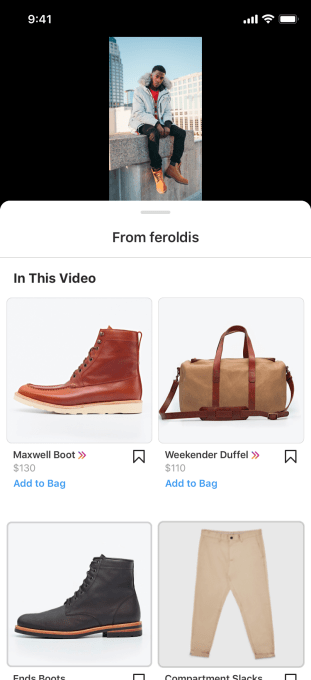
Image Credits: Instagram
Shopping has become a larger part of the Instagram experience over the past few years.
Instagram’s Explore section in 2018 gained a personalized Shopping channel filled with the things Instagram believed you’d want the most. It also expanded Shopping tags to Stories. Last year, it launched Checkout, a way to transact within the app when you saw something you wanted to buy. And just this summer, Instagram redesigned its dedicated Shop section, now powered by Facebook Pay.
Today, Instagram users can view products and make purchases across IGTV, Instagram Live, and Stories.
On IGTV, users can either complete the purchase via the in-app checkout or they can visit the seller’s website to buy. However, the expectation is that many shoppers will choose to pay for their items without leaving the app, for convenience’s sake. This allows Instagram to collect selling fees on those purchases. At scale, this can produce a new revenue stream for the company — particularly now as consumers shop online more than ever, due to the coronavirus pandemic’s acceleration of e-commerce.
In the future, Instagram says its shoppable IGTV videos will be made discoverable on Instagram Shop, as well.
Given its intention to make shopping a core part of the Instagram platform, it’s not surprising that the company intends to make Reels shoppable, too.
“Digital creators and brands help bring emerging culture to Instagram, and people come to Instagram to get inspired by them. By bringing shopping to IGTV and Reels, we’re making it easy to shop directly from videos. And in turn, helping sellers share their story, reach customers, and make a living,” said Instagram COO Justin Osofsky, in a statement.
Instagram isn’t alone in seeing the potential for shopping inspired by short-form video content. Walmart’s decision to try to acquire a stake in TikTok is tied to the growing “social commerce” trend which mixes together social media and online shopping to create a flurry of demand for new products — like a modern-day QVC aimed at Gen Z and broadcast across smartphones’ small screens.
By comparison, TikTok so far has only dabbled with social commerce. It has run select ad tests, like a partnership with Levi’s during the early days of the pandemic to create influencer-created ads that appeared in users’ feeds and directed users’ to Levi’s website. It has also experimented with allowing users to add links to e-commerce sites to TikTok profiles and other features.
Instagram didn’t say when Reels would gain shopping features, beyond “later this year.”
Read Full Article
Corsair’s TBT100 Thunderbolt 3 dock offers the right expandability in a well-designed package
Gaming peripheral expert Corsair has released a new Thunderbolt 3 docking station that boasts a number of useful ports, paired with aesthetics that should fit in perfectly with any of Apple’s Space Gray hardware kit. The TBT100 dock offers plenty of expandability for making your Mac the center of a temporary work-from-home office, or can provide great convenience and connection options even for more powerful desktop computer setups.
The basics
The Corsair TBT100 offers a full complement of ports powered via a single Thunderbolt 3 cable from your computer, along with a dedicated power adapter. For display, there are 2 HDMI 2.0 ports capable of 4K 60Hz output, with HDR color rendering. There are two USB 3.2 Type-C ports, one in front and one in back, as well as two USB 3.1 Type-A ports (both in back) that can all connect to both charge devices and provide data connections. A Gigabit Ethernet port provides networking, while a 3.5mm jack offers both headphone out and microphone in. There’s also an SDXC card reader that supports UHS-II speeds.
The TBT100 offers 85W power delivery via its lone Thunderbolt 3 cable for connected host notebooks, and can smart charge devices at up to 15W via the USB-C ports, or up to 7.5W via the USB-A connections.
Design and features
This is definitely one of the better-looking Thunderbolt 3 docks out there. It’s a category where it’s hard for design to stand out, since these generally all look roughly the same – metallic and plastic rectangles with a combinations of ports located front and back. Corsair’s dock doesn’t venture too far from this standard look, but the touches it adds like the gray aluminum finish and the way the aluminum continues around the rounded corners makes it a more attractive desktop addition than most.
The port arrangement is also well-conceived. Up front, there’s one USB-C port (handy for quickly plugging in a mobile device for a charge), the SD card reader (really useful for frequent use) and the 3.5 mm jack (ditto for commonly relocated items like headsets). Everything else is around back, letting you put more regularly connected cables in prime location for routing them to make them a more invisible part of your desktop setup.
Corsair’s choice to go with HDMI ports is also probably the best option on balance for most users. Many alternatives have gone with DisplayPort, but your average consumer these days is much more likely to have HDMI cables and HDMI-capable displays, and the spec still supports 4K resolution as well as HDR to get the most image quality out of any modern connected TV or monitor.
Bottom line
There are many flavors of Thunderbolt 3 docks, but the Corsair TBT100 offers a pretty perfect blend of connectivity, design and convenience relative to the pack. At $259.99, the price of the dock is also not too expensive, though it’s not cheap either. But if you’re looking for a reliable, permanent solution to a lack of connections for your home setup, this is the one to get.
Read Full Article
Nest Audio review
The Nest Audio is a surprisingly hefty thing. It’s compact, but dense, packing a lot into a footprint not much taller than an iPhone. At 2.65 pounds, it’s 2.5x the weight of the original Home. It’s clear that, above all, Google was interested in offering up something premium, in spite of a quite reasonable $99 price point.
It certainly took the company long enough. It’s been four years since the first device arrived — that’s a lifetime on the scale of smart home devices. But while Google introduced a slate of new products and delivered a key update to its smaller sibling, the Mini, its flagship smart speaker remained untouched, in all of its air freshener designed glory.
In four years, Google has proven less interested in hardware upgrades than Amazon. That’s not a huge surprise from a company that’s long suggested that software — not hardware — is at the heart of product evolution. But even Google knows that software can only take you so far when it comes to things like premium audio. That’s where the new device comes in.
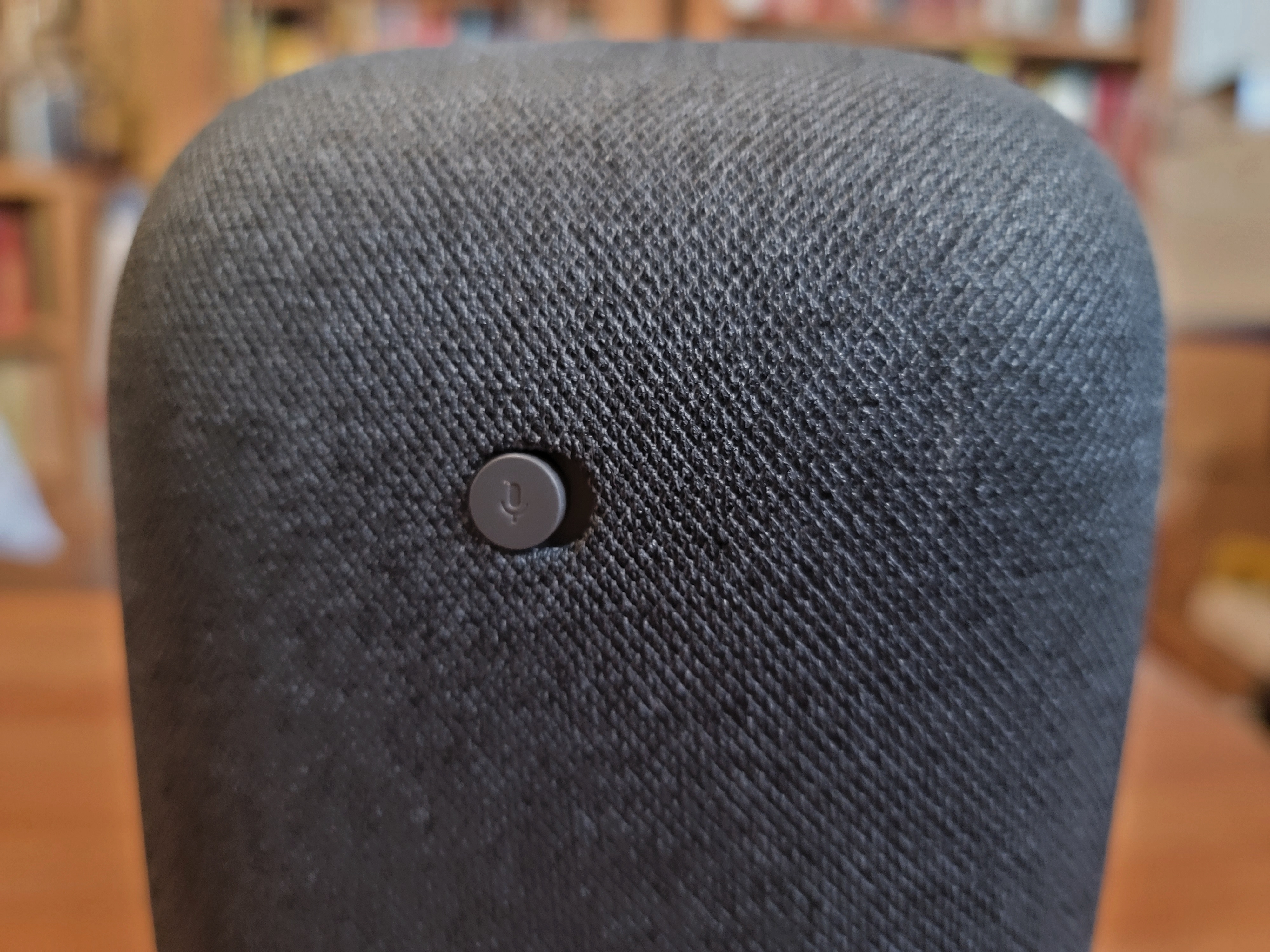
Image Credits: Brian Heater
Nest Audio’s name represents two key things. First, it’s the last of Google’s smart speaker/smart screen line to adopt the Nest title, cementing its 2014 Nest acquisition as its smart home brand. It’s not quite accurate to say that the Nest brand encompasses all of Google’s Home products — after all, a new Chromecast was launched this week with Google branding, but then, no one’s ever accused Google of being consistent about such things.
The Audio bit finds Google following a similar journey as Amazon. The first generation of smart speakers focused significantly more on the smart than the speaker. The devices were primarily considered a way to deliver smart assistants into the home — certainly not something that was set to replace anyone’s home stereo.
But Apple, for all of its issues bringing Siri into a home setting, proved that users were willing to invest in a premium product — so long as a company could demonstrate superior audio. Google followed up with the Home Max and Amazon did so first by beefing up the sound of the standard Echo, and more recently introducing the Echo Studio. There’s also the matter of the Samsung Galaxy Home, but the less said about the unreleased speaker — and Bixby in general — the better.
With Nest Audio, Google is looking to prove that good sound shouldn’t be the exclusive realm of high-end speakers. It even went so far as dropping $30 off the price of the original Google Home — putting it in line with current Echo pricing. The internals have been considerably upgraded, as well. A 50mm full-range driver (40mm on the Nest Mini) has been upgraded to a 75mm woofer for much stronger bass. Two passive radiators, meanwhile, have been swapped out for a 19mm tweeter to complete the picture.
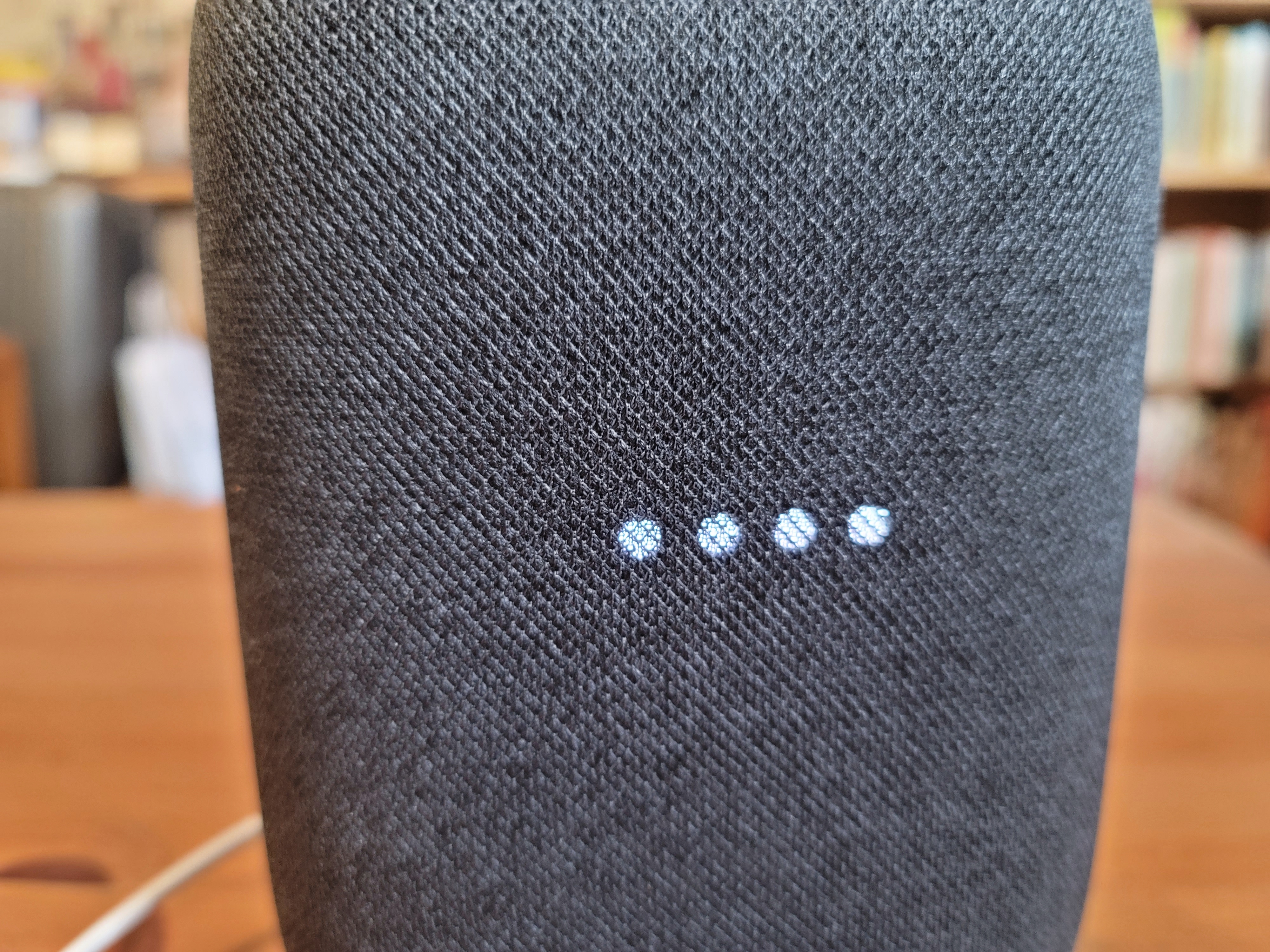
Image Credits: Brian Heater
The speaker is also capable of getting really loud — 75% louder than the original Home, according to the company. It’s too loud for my apartment. Though I would advise against relying on a single speaker to fill a large space, as stuff gets distorted at peak volumes. A speaker of this caliber is best paired with another — which is, thankfully, something Google does reasonably well.
As it stands, the Nest Audio is quite clear and full, given its pricing and size. For space like the living room in my one-bedroom New York apartment, it’s got pretty good sound. The design means that (like the new Echo) you get pretty good audio from all sides — though the company cautions against, stay, sticking it deep on a bookshelf, or else you may deal with some muddy reverb. It’s clear that Google knew it had to step up its game to deal with superior audio from third-party speaker makers like Sony who have embraced Google Assistant, and it’s done a pretty good job here.
I still prefer the much heftier and massive Google Home Max that’s currently sitting by my computer on my desk. Size really does matter in the world of speakers, for a number of pragmatic reasons, including how it moves air to create sound. That said, you can currently purchase three Nest Audios for the price of a single Google Max, so that may be something worth considering, depending on your setup and the layout of your home.
Groups and pairing are one of the strongest reasons to consider these device. The Google Home app setup is extremely simple in that regard, and presents an extremely simple and fairly inexpensive way to set up a home audio system. You can either pair two of the same speakers to create stereo (a solid choice for, say, flanking the computer screen) or simply creating groups for multiple speakers to fill a space. I do the latter with my own home setup.
It’s usually a good solution, though even at this point in the life of the devices, it can still be pretty buggy. A lot of this comes down to Wi-Fi and connectivity issues, but it can be frustrating. Wireless systems are a lot easier — but less reliable — than simply wiring up your system the old-fashioned way. And of course, there’s the fact that the more wireless devices you install, the more strain there’s going to be on your home network.
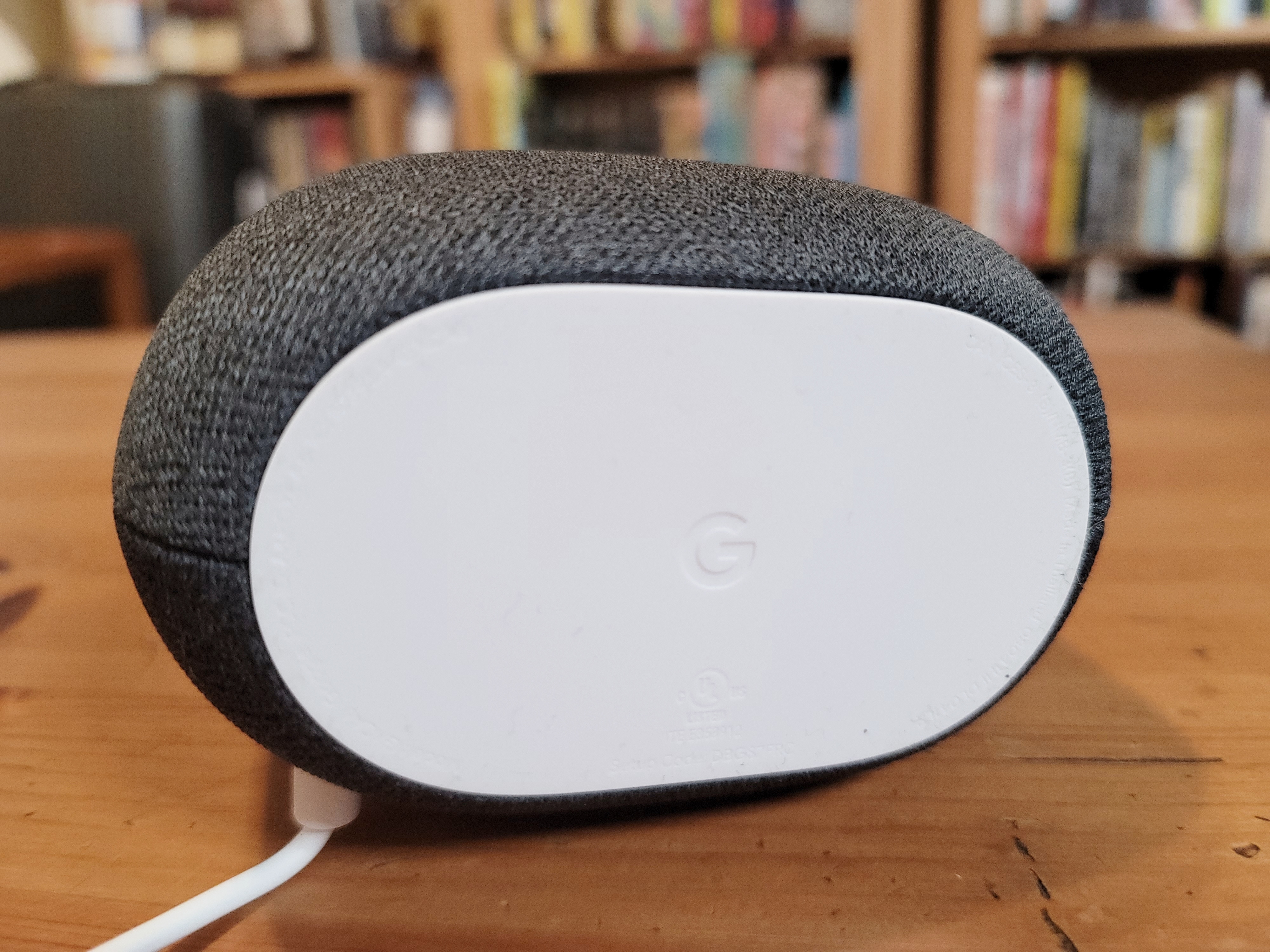
Image Credits: Brian Heater
There are some nice tweaks to the system, as well. Ambient IQ actually turns up assistant’s voice when there are sounds in the background, while Media EQ dynamically adjusts the balance depending on what you’re listening to — be it music or a podcast, turning up the vocal output for the latter.
The speaker’s design has improved dramatically. We mocked the original Home for looking like a Glade air freshener since day one, and that criticism still stands. The Nest Audio, meanwhile, if far more unassuming. Covered entirely in fabric with a design that Google freely admits was inspired by a pillow, it’s designed to blend in with its décor — which, frankly, is precisely what a smart speaker should do.
There are five colors: white (chalk), black and Sage, Sand and Sky — all pastels. Odds are pretty good you’ll find one that fits your home. Google sent me a black one, which is likely what I would have chosen myself. And bonus points for the fact that the fabric is made from recycled water bottles, like the Nest Mini before it.
The Nest Audio is a long overdue upgrade to the company’s line of smart home devices and one that puts the focus on sound, precisely where it should be.
Read Full Article
Google delays mandating Play Store’s 30% cut in India to April 2022
Google is postponing the enforcement of its new Play Store billing policy in India to April 2022, days after more than 150 startups in the world’s second largest internet market forged an informal coalition to express concerns over the 30% charge the Android-maker plans to mandate on its store and started to explore an alternative marketplace for their apps.
The company, which is going live globally with the new Play Store rule in September 2021, is deferring the enforcement of the policy only in India, it said. It is also listening to developers and willing to engage to allay their concerns, it said.
Last week, Google said it would no longer allow any apps to circumvent its payment system within the Play Store. The move, pitched by Google as a “clarification” of its existing policy, would allow the company to ensure it gets as high as a 30% cut on in-app purchases made through Android apps operating in a range of a categories.
Google’s announcement today is a direct response to the loudest scrutiny it has received in a decade in India — its biggest market by users but also a place where, compared to Western markets, it generates little revenue. More than 150 startups in India last week formed an informal coalition to fight the company’s strong hold on Indian app ecosystem. Google commands 99% of the smartphone market in India, according to research firm Counterpoint.
Among the startups that have expressed concerns over Google’s new policy are Paytm, India’s most valuable startup, payments processor Razorpay, fantasy sports firm Dream11, social network ShareChat, and business e-commerce IndiaMART.
More than 50 Indian executives relayed these concerns to India’s Ministry of Electronics and Information Technology over a video call on Saturday, according to three people who attended the call.
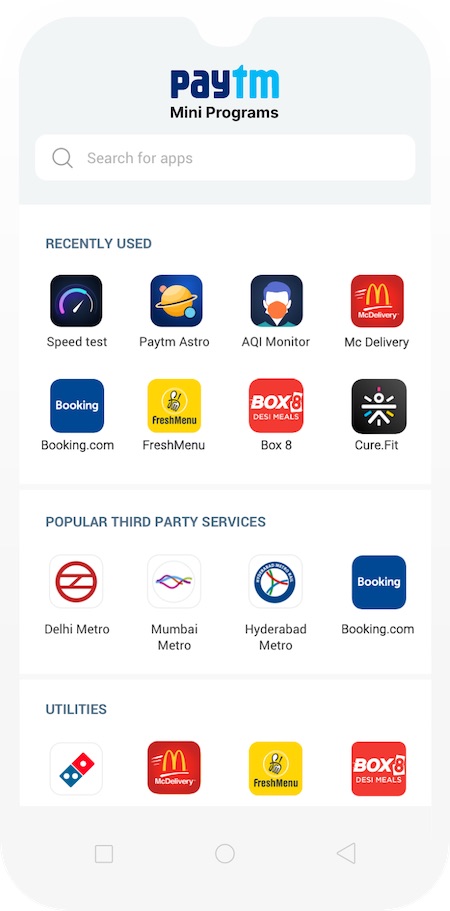
Several businesses in India have long expressed concerns with the way Google has enforced its policies in India, but the matter escalated last month after the company temporarily pulled Paytm app from the Play Store for promoting gambling.
Google said Paytm had repeatedly violated its policies, and the company’s Play Store has long prohibited apps that promote gambling in India. Google has sent notices about warnings over gambling to several more firms in India in recent weeks.
A senior industry executive told TechCrunch that the company should have expressed these concerns months before the popular cricket tournament IPL was scheduled to commence. Fantasy sports apps allow users to pick their favorite players and teams. These players stand to win real money or points that they can redeem for physical goods purchase based on the real-world performance of their preferred teams and players. IPL season sees a huge surge in popularity of such fantasy sports apps.
“The IPL even got delayed by months. Why did Google wait for so long? And why does the company have a problem with so-called gambling in India, when it permits such activities in other markets? The Indian government has no problem with it,” the executive said, requesting anonymity.
Paytm on Monday announced its own mini-app store featuring several popular services including ride-hailing firm Ola, health care provides 1mg and Practo, fitness startup Cure.fit, music-streaming service Gaana, car-rental provider Zoomcar, Booking.com, and eateries Faasos, Domino’s Pizza, and McDonald’s. The startup claimed that more than 300 firms have signed up for its mini store and that its app reaches more than 150 million users each month. (In a written statement to TechCrunch, Paytm said in June its app reached more than 50 million users in India each month.
Paytm, which says its mini-app store is open to any developer, will provide a range of features including the ability to support subscriptions and one-step login. The startup, which claims said it will not charge any commission to developers for using its payments system or UPI payments infrastructure, but will levy a 2% charge on “other instruments such as credit cards.”
“There are many challenges with traditional mobile apps such as maintaining multiple codebases across platforms (iOS, Android or Web), costly user acquisition and requirement of app release and then a waiting period for user adoption for any change made in the app. Launching as a Mini Apps gives you freedom from all these hassles: implying lesser development/testing and maintenance costs which help you reach millions of Paytm users in a Jiffy,” the Indian firm said in its pitch.
The launch of a mini-store further cements Alibaba-backed Paytm’s push into turning itself into a super-app. Its chief rivals, Walmart-backed PhonePe and Google Pay, also operate similar mini stores on their apps.
Whether Paytm’s own mini app store and postponement of Google’s new Play Store policy are enough to calm other startups’ complaints remain to be seen. PhonePe is not one of the mini apps on Paytm’s store, a Paytm spokesperson told TechCrunch.
“I am proud that we are today launching something that creates an opportunity for every Indian app developer. Paytm mini app store empowers our young Indian developers to leverage our reach and payments to build new innovative services,” said Vijay Shekhar Sharma, co-founder and chief executive of Paytm, in a statement.
Read Full Article

